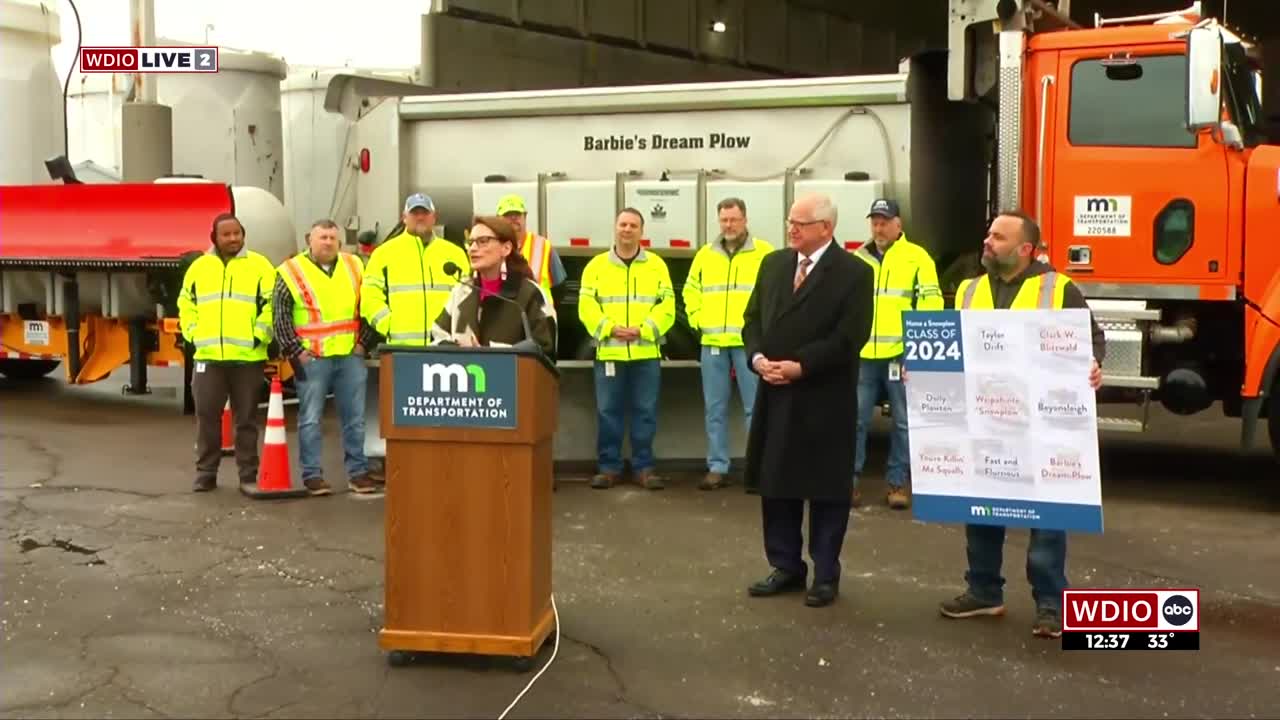Will Minnesota Film Tax Credits Attract More Productions?

Table of Contents
The Current State of Minnesota's Film Tax Credit Program
Minnesota offers a film tax credit program designed to incentivize film and television production within the state. Understanding the specifics of this program is crucial to assessing its effectiveness.
Types of Credits Offered
The Minnesota film tax credit program offers several types of credits, each with specific eligibility criteria and limitations.
- Post-Production Tax Credit: This credit incentivizes post-production activities like editing, sound mixing, and visual effects work performed in Minnesota. Typically, it's a percentage of qualified post-production expenses. The exact percentage and any expenditure caps are subject to change and should be verified with the Minnesota Department of Employment and Economic Development (DEED).
- Production Tax Credit: This credit applies to qualified production expenses incurred during filming in Minnesota, such as salaries for Minnesota-based crew members, location fees, and equipment rentals within the state. This credit, like the post-production credit, has specific percentage and cap limitations.
- Digital Media Production Tax Credit: This credit is designed to specifically target digital media projects, such as video games and animation. The specifics of eligibility and credit percentages will need to be checked with the DEED.
It's essential to note that these credits often have qualifying requirements, such as a minimum spend threshold and adherence to specific guidelines regarding workforce hiring and location utilization. Recent legislative sessions have seen proposals to modify these credits, so staying updated on the latest DEED guidelines is vital.
Application Process and Administration
The application process for Minnesota film tax credits is administered primarily through the Minnesota Department of Employment and Economic Development (DEED). Applicants typically need to submit a detailed application outlining project details, budgets, and adherence to eligibility requirements. The process can involve multiple stages of review and require substantial documentation.
Bureaucratic hurdles can exist, including processing times and the complexity of navigating the application requirements. While the DEED strives for efficiency, delays can occur, impacting production timelines. Anecdotal evidence suggests approval times range from several weeks to several months depending on the complexity of the application and the workload of the DEED. Successful applicants often credit proactive communication and thorough preparation as key factors in their timely approval.
Comparing Minnesota's Incentives to Other States
To assess the competitiveness of Minnesota's film tax credits, it's crucial to benchmark them against programs in other states.
Benchmarking Against Neighboring States
| State | Credit Percentage | Caps/Limitations | Eligibility Requirements |
|---|---|---|---|
| Minnesota | Varies (see above) | Varies, often dependent on project type and spend | Varies, usually includes spending thresholds and in-state crew |
| Wisconsin | (Check State Website) | (Check State Website) | (Check State Website) |
| Iowa | (Check State Website) | (Check State Website) | (Check State Website) |
| North Dakota | (Check State Website) | (Check State Website) | (Check State Website) |
| South Dakota | (Check State Website) | (Check State Website) | (Check State Website) |
(Note: This table requires further research to populate accurately with current data from each state's film office. Always refer to the official state websites for the most up-to-date information.)
Minnesota's competitive advantage lies in its potential for unique filming locations and a relatively lower cost of living compared to some larger production hubs. However, its potential disadvantage lies in the overall size of its incentive program compared to states with larger, more established film industries.
National Comparison
States like California, Georgia, and New York offer substantial film tax credits, often with higher percentages and larger caps. These states also benefit from established film infrastructure, a skilled workforce, and a strong reputation within the industry. Minnesota's program needs to offer a compelling alternative, perhaps focusing on niche advantages such as specific landscapes or a less saturated market to attract productions. Factors beyond tax credits, such as readily available crew, studio space, and supporting industries, also significantly influence production location decisions.
Economic Impact and Job Creation
The effectiveness of Minnesota's film tax credit program is directly linked to its economic impact and job creation.
Measuring the Success of the Program
Measuring the success of Minnesota's film tax credit program requires analyzing several key metrics. Data on the number of productions attracted, jobs created, and total economic impact are necessary to assess the return on investment. This data is often compiled by the DEED and may be available through their website or through economic impact studies commissioned by the state. (Include links to relevant government reports and data here once available). Tracking the growth of related industries, such as post-production services and equipment rentals, is also crucial for a comprehensive assessment.
Future Projections and Potential Growth
The future of Minnesota's film industry hinges on the continued success of its tax credit program and additional support for infrastructure development. Investments in studio space, training programs for film professionals, and marketing initiatives to attract productions are all essential. Projected growth depends heavily on the program's competitiveness and its ability to attract not only larger productions but also establish a sustainable environment for smaller independent films.
Conclusion
Minnesota's film tax credits offer a competitive incentive, although their effectiveness in attracting productions depends on several factors. While the program shows promise, its success hinges on sustained investment, improvements to the application process, a robust marketing campaign, and further infrastructure development to compete with larger, more established film production hubs. Will these incentives truly attract more productions? Only time will tell, but continued investment in and improvement of the program are key to fostering the growth of Minnesota's film industry. Learn more about applying for Minnesota film tax credits and contribute to the future of filmmaking in the state.

Featured Posts
-
 6 3 Twins Victory Mets Lose Second Game Of Series
Apr 29, 2025
6 3 Twins Victory Mets Lose Second Game Of Series
Apr 29, 2025 -
 Results Of The Minnesota Snow Plow Naming Contest
Apr 29, 2025
Results Of The Minnesota Snow Plow Naming Contest
Apr 29, 2025 -
 Unveiling The Ccp United Fronts Influence In Minnesota
Apr 29, 2025
Unveiling The Ccp United Fronts Influence In Minnesota
Apr 29, 2025 -
 Examining The Factors Contributing To Tylor Megills Success With The Mets
Apr 29, 2025
Examining The Factors Contributing To Tylor Megills Success With The Mets
Apr 29, 2025 -
 The Key To Tylor Megills Success A Deep Dive Into His Mets Performance
Apr 29, 2025
The Key To Tylor Megills Success A Deep Dive Into His Mets Performance
Apr 29, 2025
